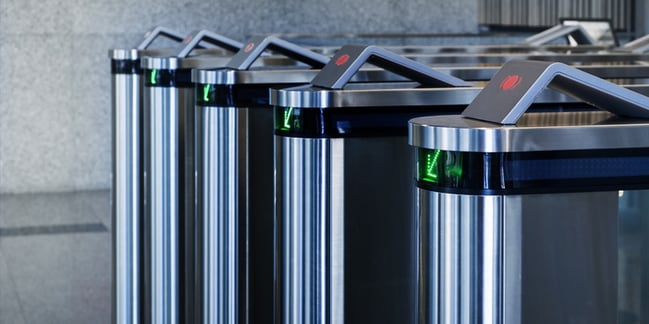
From budget restraints to industry regulations, security directors overwhelmed with day-to-day operations can inadvertently overlook a few simple security basics. Is your organization making any of them?
1) Relaxing the rules on ID requirements
It may be tempting for security personnel to allow employees, particularly managers, through a security checkpoint when they fail to present ID but this can have terrible consequences under certain circumstances. While many organizations have procedures in place to alert security when an employee is terminated, gaps in communication may occur and leave your organization susceptible to someone seeking retaliation. Guards familiar with certain faces may allow them through, unaware that their access credentials are no longer valid. It may also be easier for someone to sneak through an entry point with a large group of people during times of heavy traffic, so it's best to develop a protocol for handling a multitude of possible access control mishaps including denied access notifications, times of heavy foot traffic (particularly the end of day rush), and unfamiliar visitors that frequent your facility but are not employed or doing business with you.
2) Assigning personnel without a facility assessment
Regardless of how much security experience a facility manager or security director may have, an outside analysis is not only beneficial — in some industries it is a necessary regulation, and for good reason. A fresh, outside perspective will examine your facility with unbiased eyes and may raise questions that haven't occurred to you yet. They may examine your existing data, evaluate who is primarily visiting your building and what liabilities they bring with them, and pinpoint shifts in traffic flow, showing you where gaps exist and how to patch them appropriately.
3) Installing too much or too little security
Throwing $500 at a $5,000 issue or vice versa is the quickest way to unravel your security budget and, possibly, your business. Placing your personnel and assets at unnecessary risk and focusing on the wrong areas can detrimentally affect your safety, so avoid the one-size-fits-all mentality when you are responsible for a multi-site setup. One of the key advantages of the assessment you receive is that it will point to how much you should be investing in correcting any issues and what specific upgrades will be necessary. Your current equipment, setup, and procedures should be meeting the unique needs of your facility and industry — nothing more, nothing less.
4) Failing to train on your security software
All too often, the technology used to secure a facility is installed and little is done to understand all of its capabilities. Security directors can select certain upgrades and equipment, content that it will cover their areas of concern without realizing its added benefits (which is frankly a waste of a significant financial investment). In facilities with 40+ cameras, is your equipment configured to event-driven recording, ensuring that random toggling between cameras is interrupted if an alarm goes off? Does your staff know how to find the recordings they need when an event occurs? After using your equipment for several weeks, did you present any follow-up questions to whomever installed it? Take the time to familiarize yourself with every feature so your system is not underutilized.
5) Neglecting internal security
We all know security threats can stem from our very own employees, so placing the entire focus on external threats can be ill-advised. The people that spend approximately 8-10 hours a day in your building know its vulnerabilities better than anyone, and those with poor intentions are likely to know what they can and cannot get away with. Regardless of the size of your team and facility, not everyone needs access to everything and you could be losing valuable assets due to the very staff employed to protect it. As your business grows and access needs shift, stay on top of your employees' access control credentials and make sure they don't have unnecessary admittance to property and assets that they do not need to do their job. It may also be time to do a review of employees with multi-site access to see if it still applies.
Your position as a security expert is critical for protecting the occupants of the building and their property, so remain mindful of these common missteps to avoid potential losses. Proper management of your system can be the difference between keeping your property safe and a steady stream of security breaches. By getting these five areas addressed, you will be on the right path to closing gaps in your current security plan.
